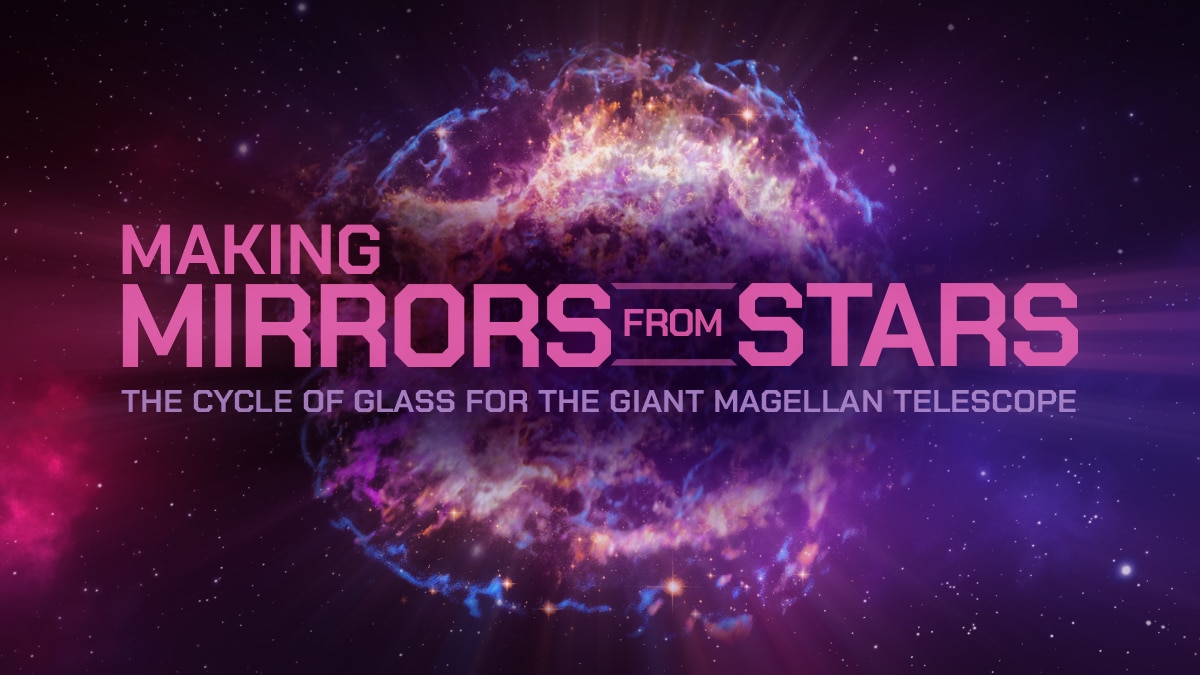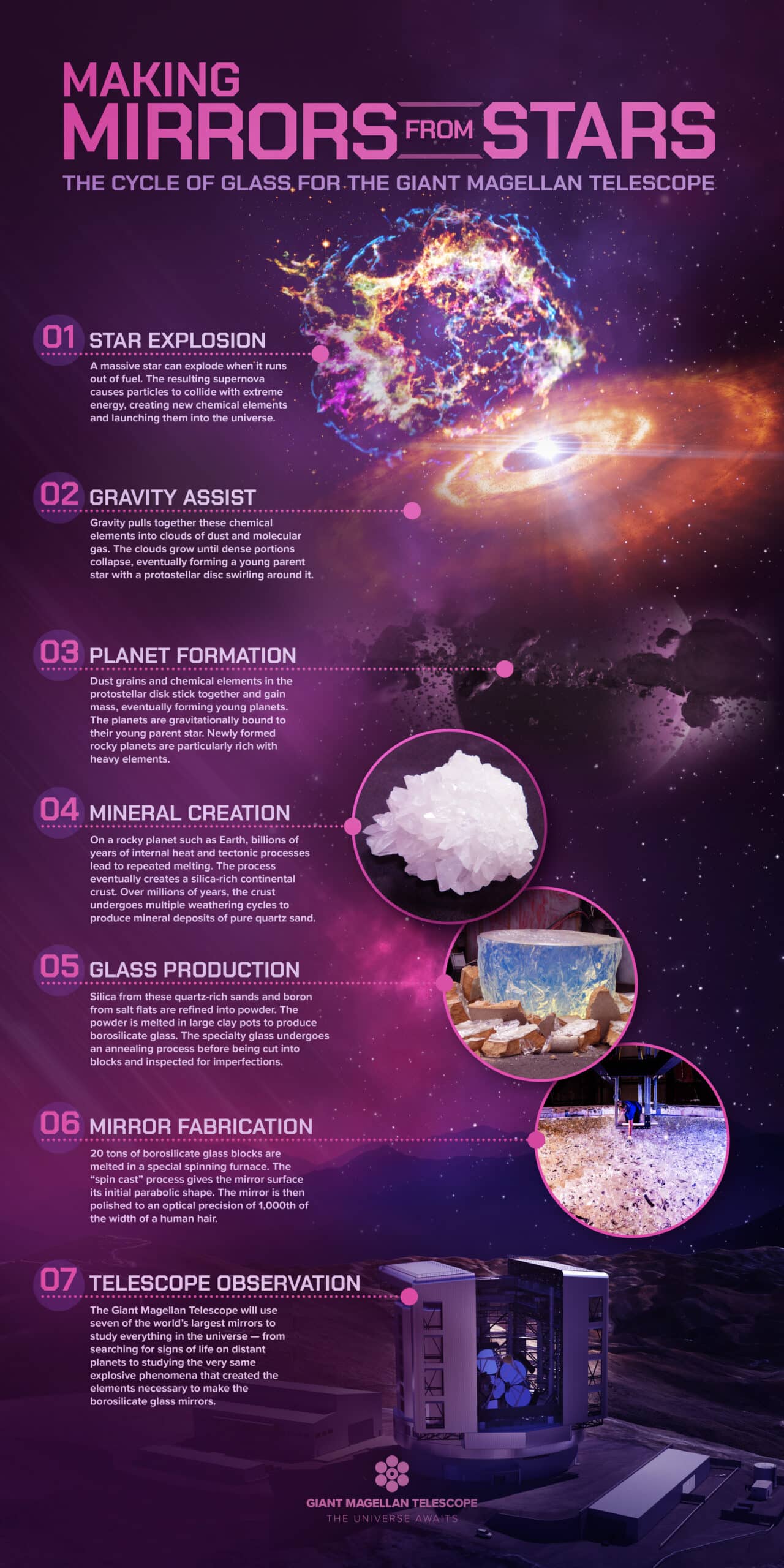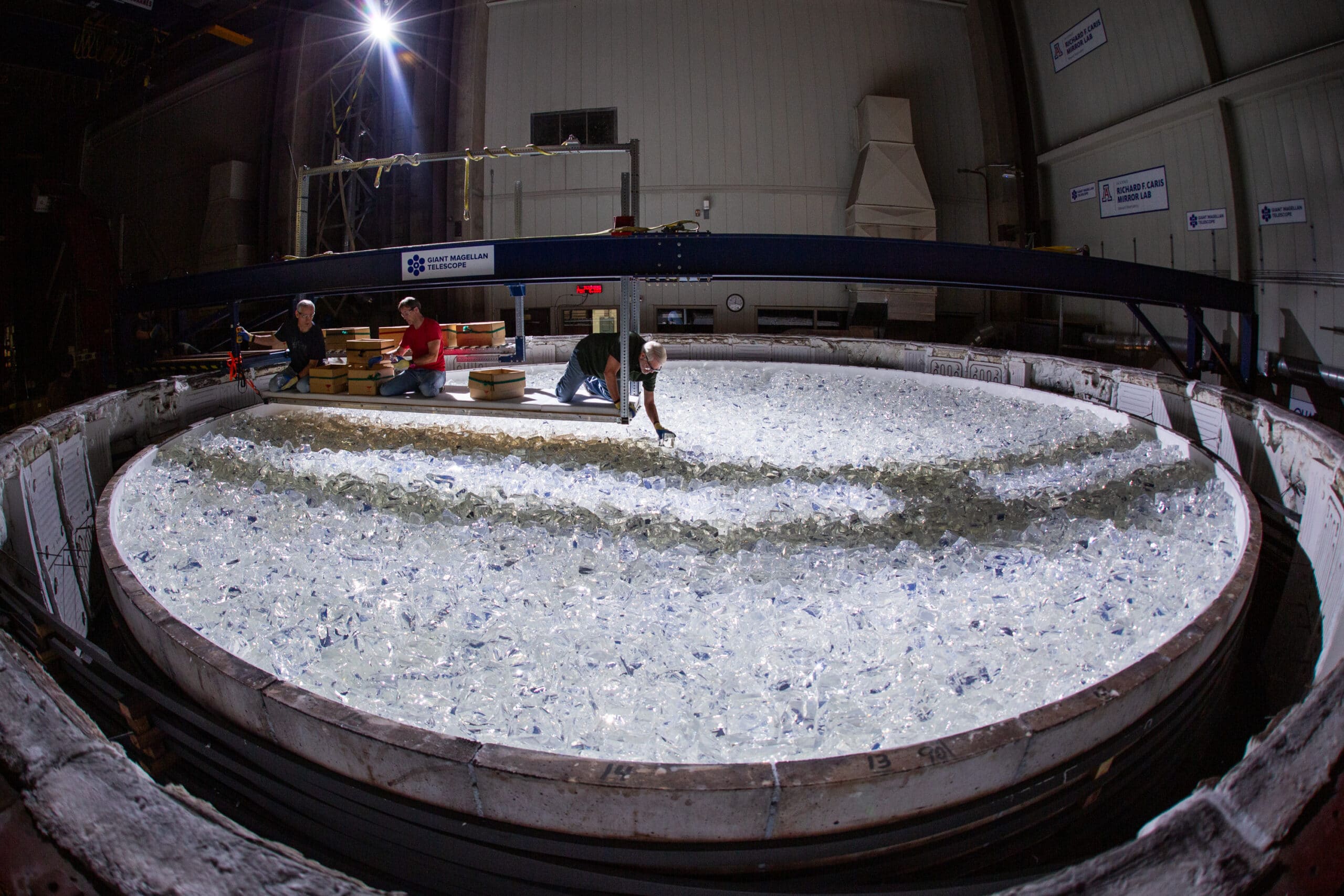Making Giant Mirrors from Stars

Chemical elements come full circle in the cycle of glass for the world’s largest optical mirrors, launching our view into the universe.
At 200 times more powerful than today’s best telescopes, scientists will use the Giant Magellan Telescope to study nearly all aspects of astrophysics—from searching for signs of life on distant exoplanets to investigating the cosmic origins of chemical elements. In fact, astronomers will study the very same explosive phenomena that created the elements necessary to fabricate the telescope.
These elements are created when supernovas from exploding stars cause particles to collide with extreme energy, launching newly formed chemical elements into the universe. The elements are pulled into clouds of dust and molecular gas so dense, that portions collapse to form young parent stars haloed by protostellar discs. Gravitationally bound to a young parent star, rocky planets then snowball into formation—rich with heavy elements.
Fast-forward millions of years, the silica-rich continental crust of a rocky planet generates mineral deposits of pure quartz sand. Silica from these quartz-rich sands, and boron from salt flats, are refined into powder that is then melted to produce the borosilicate glass used in the telescope’s giant mirrors.
Cycle of Glass Infographic

The process of casting the Giant Magellan’s seven primary mirrors (the world’s largest optics) begins at the University of Arizona Richard F. Caris Mirror Lab where technicians melt 20 tons of high-purity, low-expansion, borosilicate E6 glass into the world’s only spinning furnace designed to cast giant mirrors for telescopes. At the peak of the melting process, the furnace spins at five revolutions per minute, heating the glass to 1,165 degrees Celsius (2,129 F) for approximately five hours until it liquefies into the mold.
The mirrors then enters a one month annealing process where the glass is cooled while the furnace spins at a slower rate to remove internal stresses and toughen the glass. From there, it takes another few months to cool to room temperature. This process gives the mirror surface its unique parabolic shape. Once cooled, each mirror is polished for approximately two years before reaching an optical surface precision of less than one thousandth of the width of a human hair. All seven of Giant Magellan’s primary mirrors are either complete or in production.
These mirrors will allow astronomers to see farther into the universe with more detail than any other optical telescope before. They are a crucial part of the optical design that allows the Giant Magellan to have the highest image quality over the widest field of view of any extremely large telescope in the 30-meter class. The advantage is extremely powerful for spectroscopy and the precise measurements of distances, dynamics, chemistry, and masses of celestial objects in deep space.
Learn more about the world’s largest mirrors here



